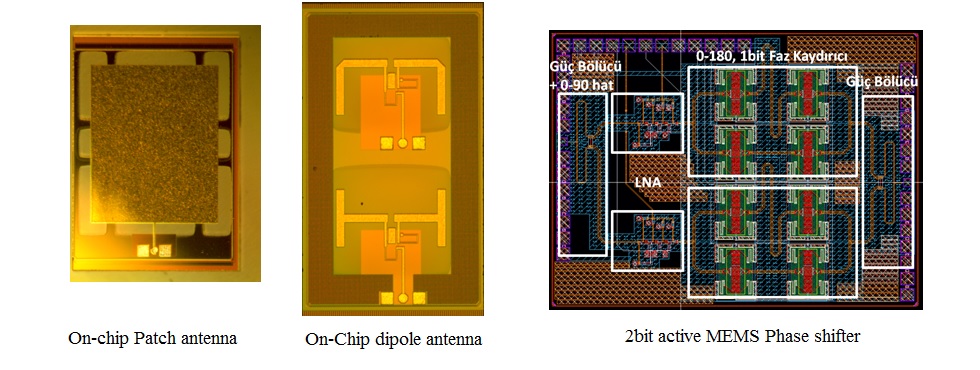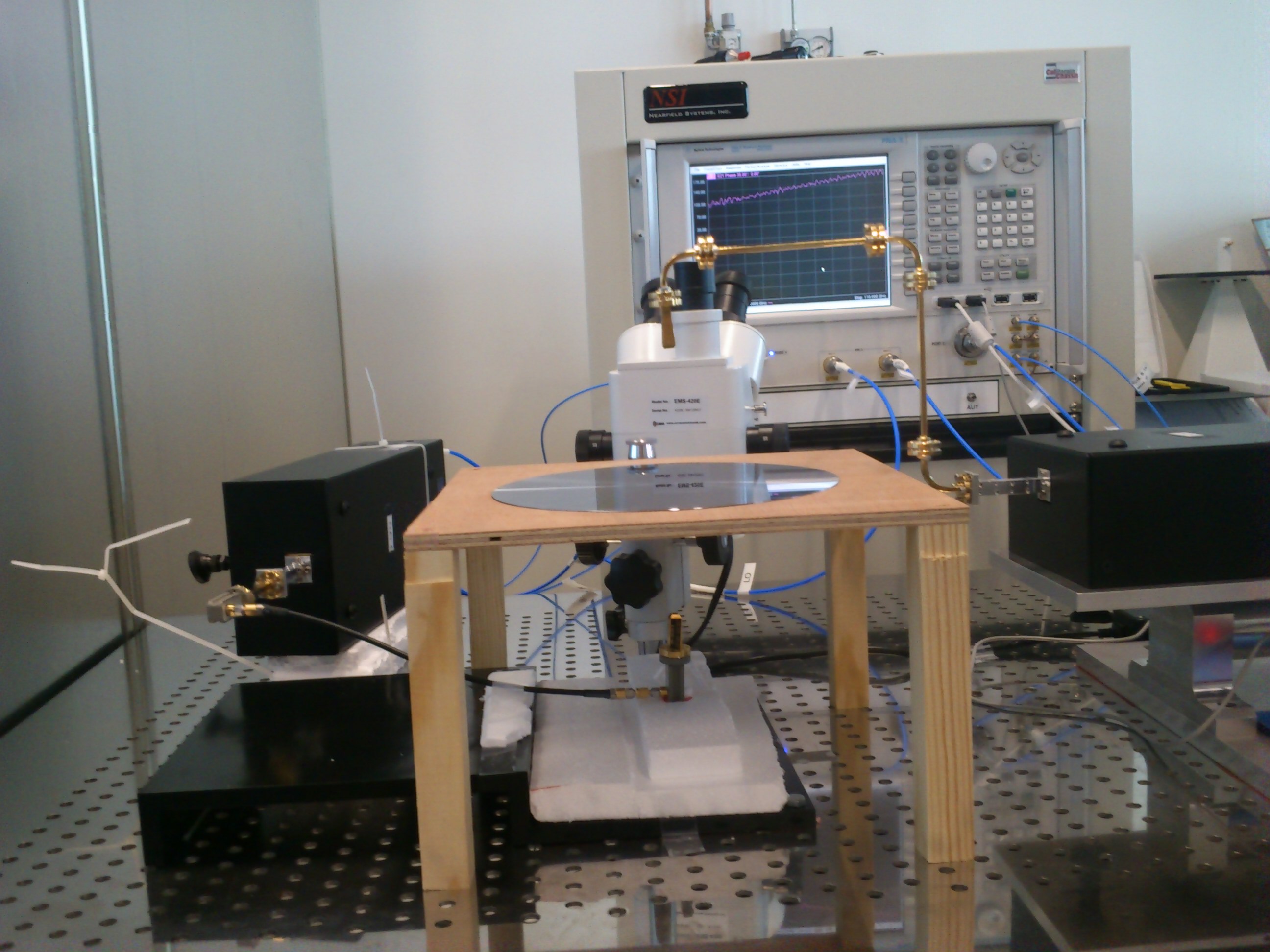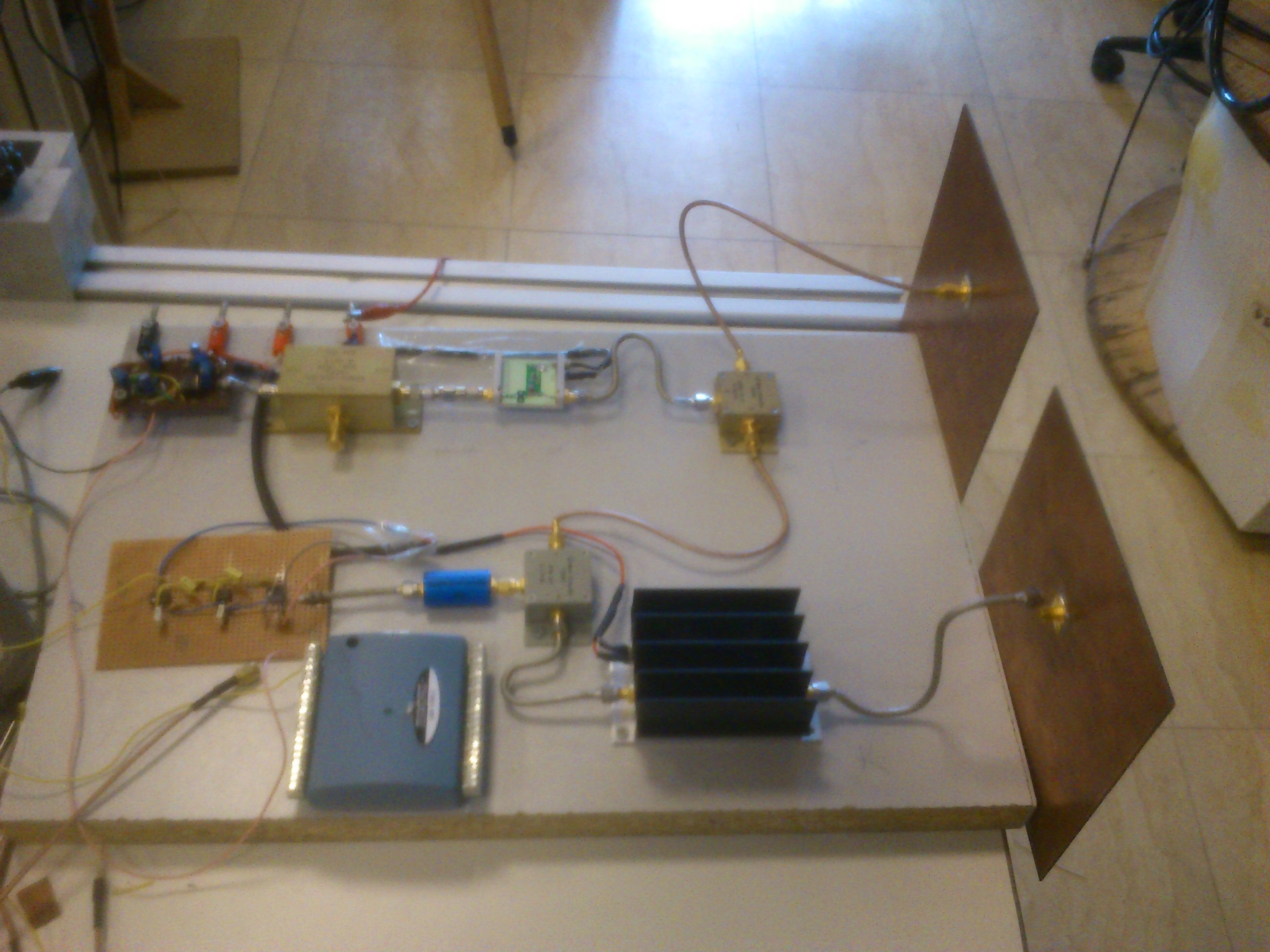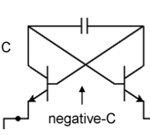Current Research
Master thesis & main projects:
- Automotive radar system at 77GHz(Master thesis work)
In 77 GHZ band, there is a 5 GHz bandwidth allocated for application of short range automotive radar for the purposes of: stop and go, blind side detection, crash avoidance. This project involves on-chip antenna and active circuitry design at millimeter wave range. To realize our antennas and active circuitry, we use silicon based technology available at IHP microelectronic company, Germany. The most challenging part is the measurement process which requires high-tech devices and highly skilled operators. Some of our millimeter wave measurement setups are: W-band antenna measurement setup , W-band LNA gain and noise figure measurement setup , and our W- band Silicon Dielectric measurement setup .
Summary of our work and designs:
On-chip dipole & Patch Antenna
W-band MEMS Based Digital Phase Shifter
W-band Active Phase Shifter
- Silicon Dielectric constant measurement at W-Band using free space method:
Free space method is used to measure the dielectric constant of the silicon from at W-band. At the first phase we tried to calculate the dielectric constant by transmission delay but the result were not reliable due to reflection problem. At the second phase, we will try to get rid of unwanted reflections to have better result.
W-band silicon measurement setup
- FMCW radara at 1GHZ
Nowadays radar systems have many civil and commercial applications. FMCW(Frequency Modulated Continuous Wave) are among popular radar systems. FMCW radar can measure range and velocity(Doppler effect) at the same time. Our designed FMCW radar works at 1GHz and is able to detect object with range up to 100meter and velocity up to 300km/h.
- Non-Foster matching at 2GHz:
Current smart phones have many communication/location systems such as GSM/3G/WLAN/Bluetooth/GPS/Glonass implemented as hardware. The number of antennas required for these systems are increasing and they also have to be implemented within a limited area; which will make electrically small antennas play a very significant role. Currently, electrically small antennas are used for some applications with degraded performance. Matching of these small radiating antennas is achieved by non-foster matching circuits which are discrete implementation of active circuits such as amplifiers/oscillators. In our contribution, we will integrate both the antenna and the active circuit, which achieves matching, in integrated process provided by IHP. It is beyond the state-of-art since the antenna will be very small to be cost effective and also integration will be also very cost-effective since both the antenna and the active circuits will be manufactured using the same RFIC process. This will improve the performance as well as generating compact transceivers. In this work we have studied the viability of designing Negative Impedance Converter (NIC) at microwave frequency say around 2GHz. surfing on open literature, 1.5GHz is the highest frequency in which NIC design has been reported to date.




